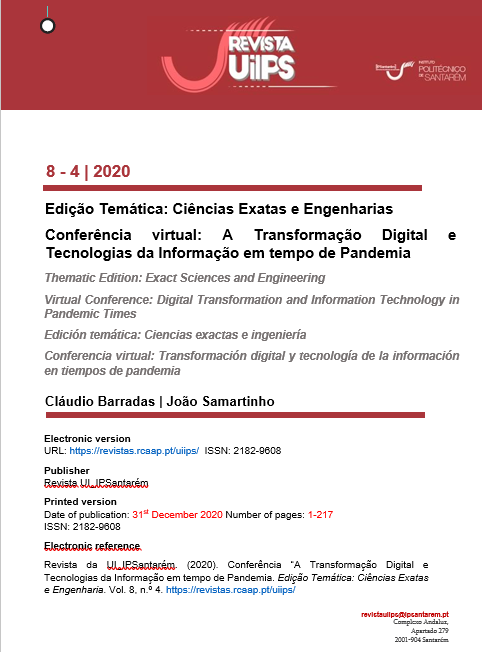Distance learning models and digital communication in higher education: Live-Learning as a business strategy
DOI:
https://doi.org/10.25746/ruiips.v8.i4.21980Keywords:
Communication, Consumer, Higher Education; Live-Learning, Pandemic.Abstract
In recent years, digital transformations have caused numerous changes in the consumer market, including in the education sector. In particular, higher education has been constantly challenged to innovate in pedagogical and marketing terms to meet the needs of students, consumers imbued with behaviors and preferences brought from other consumption contexts. Such innovations are presented with the extensive emergence of digital teaching platforms (Moodle, Canvas, TalentLMS and others) and several communication resources (Zoom, VideoScribe, PowToon and others), capable of optimizing the communication model of educational institutions. From marketing strategies to the development of teaching and learning methods, educational institutions have been using digital social media (website, Instagram, Facebook, WhatsApp and others) in a massive way to get closer to the student. Due to the pandemic of the new coronavirus, between the months of February and March 2020, “states of emergency” were decreed in Brazil and Portugal. Since then, limitations on locomotion and social interaction have been imposed, which eventually forced higher education institutions (HEIs) to interrupt traditional classroom teaching. In some cases, even courses offered on a b-learning and e-learning basis have been affected. As a result, the COVID-19 pandemic caused several educational institutions to accelerate the process of inserting new information technologies in their business models, so that they could serve their students and, at the same time, be economically sustainable. To maintain communication, videoconferencing tools and MOOC systems (Massive Open On-line Course) were used, however, several teachers reported that the existing structure was not conducive to collaborative teaching (Rannastu-Avalos and Siiman, 2020). In this context, some HEIs were more prepared than others and, therefore, were able to adapt more quickly to the crisis scenario. However, the time of pandemic has been prolonged and consumers of education, day after day, are changing their behavior, which arouses the need to create contemporary models that meet the new requirements. It is expected that, when society is reestablished in the face of the present crisis, the face-to-face regime can be offered as in the past, however, after this period, it is suggested that many students may not choose traditional teaching or even b-learning, raising the need to create new teaching formats. It is well known that e-learning can be an appropriate alternative for such need, however, the education market is used to distance learning on demand, that is, asynchronous, in which students and teachers do not live together, in time real, the teaching-learning experience. In this format, the most common are pre-recorded classes, content arranged in files for download, support via e-mail, discussion forums and evaluations applied by intermediaries. Although this format satisfies the desires of many, social interaction is intrinsic to the human being and, therefore, several students may not adapt to the “traditional” e-learning model. To meet this need for consumption, new models are emerging, above all, synchronous and asynchronous models with technological resources that generate a perception of effective learning (Arbaugh, 2018). One of them is Live-Learning or Live Distance Learning, employed by Brazilian HEIs such as Instituto de Ensino e Pesquisa (INSPER) or Escola Superior de Propaganda e Marketing (ESPM), or as mentioned in the literature, Live-Streaming Service (Liu and Hung, 2020). Although the term is still imprecise, the model is equipped with all the e-learning resources and added the possibility that teachers can expose the contents live via web conference, with classes held on scheduled days and hours and evaluations applied by the teachers of the curricular units. Although real-time conferences became a habit during the pandemic, there are indications that few HEIs perceive this model as a new format for marketing their training offer, that is, as a new channel in an omnichannel strategy. Every omnichannel business exploits the strengths of the on and off channels to adapt to the needs and characteristics of the customer (Chopra, 2018). In this scenario, it is intended to identify the HEIs that have adopted Live-Learning, as well as to analyze how the courses are structured and commercialized, as well as what differentials and added value are offered to consumers, in this context, students. To explore the perspectives and relationships between the aspects of the object of study, it is intended to develop an investigation of qualitative methodology in Portuguese and Brazilian HEIs that offer training at the level of specialization, these are postgraduate training that do not confer an academic degree. It is expected to develop the study based on the content available on the institutional websites of the HEIs, which can later be analyzed with the aid of the NVIVO software, following the techniques of content analysis. Considering the losses and difficulties arising from the pandemic, it is believed that this investigation can offer results capable of resizing, in the face of digital transformation, the institutions' business model, so that they are in line with the new forms of consumption. Adjacently, it is also expected to contribute to the discussion of the term Live-Learning.
Downloads
Published
How to Cite
Issue
Section
License
Authors publishing in this journal agree to the following terms:
Authors retain copyright and grant the journal the right of first publication, with the article simultaneously licensed under the Creative Commons Attribution License that allows sharing of the work with acknowledgement of authorship and initial publication in this journal.
Authors are permitted to enter into additional contracts separately for non-exclusive distribution of the version of the article published in this journal (e.g., publish in an institutional repository or as a book chapter), with acknowledgment of authorship and initial publication in this journal.
Authors have permission and are encouraged to publish and distribute their work online (e.g., in institutional repositories or on their personal webpage) at any point before or during the editorial process, as this may generate productive changes, as well as increase the impact and citation of the published work.





